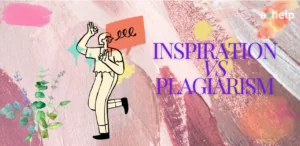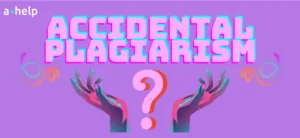In academic and professional writing, respect for somebody’s intellectual property is the most important thing. However, the violation of this principle, commonly known as plagiarism, presents a persistent challenge. When discussing what types of plagiarism exist, mosaic plagiarism stands out due to its subtlety. Mosaic plagiarism means when a student borrows different sayings from the source with no proper citations or just changes a couple of synonyms while still using the majority of somebody else’s work. This creates a sort of ‘mosaic’, when you arrange small pieces to create the bigger picture. And while mosaics in general is an amazing form of art, mosaic plagiarism can get you in trouble.

✅ AI Essay Writer ✅ AI Detector ✅ Plagchecker ✅ Paraphraser
✅ Summarizer ✅ Citation Generator
Understanding Plagiarism and Its Various Forms
Plagiarism, at its core, involves the unauthorized use or close imitation of another author’s work and presenting it as one’s own. It is a spectrum that ranges from the blatant act of copying entire texts without attribution to more nuanced forms that may not be immediately recognizable. Each plagiarism type undermines the principles of academic integrity and originality, highlighting the importance of awareness and proper citation practices in academic and professional writing. Here are the most common types of plagiarism, each with its unique characteristics:
| Direct Plagiarism | This is the most blatant form of plagiarism. It occurs when an individual copies text word-for-word from a source without using quotation marks or giving proper credit to the original author. This type of plagiarism is easily detectable and considered a severe violation of academic integrity. |
| Self-Plagiarism | Self-plagiarism happens when someone reuses their own previously published work or submissions in a new context without acknowledging the initial use. Although it might seem less severe, it misleads the audience about the novelty and originality of the content. |
| Accidental Plagiarism | Accidental plagiarism occurs when a person neglects to cite their sources properly, misquotes texts, or paraphrases too closely to the original source without realization. This type of plagiarism stems from a lack of understanding of citation rules or oversight rather than an intent to deceive. |
| Source-Based Plagiarism | This involves incorrect attribution or the use of a source that doesn’t exist. Fabricating sources or attributing ideas to the wrong source both fall under this category, misleading readers about the credibility and foundation of the information presented. |
| Data Falsification | This form of plagiarism involves altering or making up data in academic research. It undermines the research’s integrity and can lead to serious consequences in fields that rely on accurate data for decision-making. |
| Paraphrasing Plagiarism | A subtle form where the writer changes a few words or the sentence structure of the original text without changing the meaning or providing credit. While it may appear as an attempt to use one’s own words, it still constitutes plagiarism if the source is not acknowledged. |
| Global Plagiarism | This occurs when someone takes an entire work by someone else and passes it off as their own. Unlike direct plagiarism, which may involve portions of a text, global plagiarism encompasses the theft of a complete work. |
| Mosaic Plagiarism ⬇ | Using bits and pieces from multiple sources to create a new text. It often involves slightly rephrasing the original texts and failing to give credit to the sources. |
What is Mosaic Plagiarism?
This form of academic misconduct can be particularly deceptive, as it superficially appears as original work to the untrained eye.
| Mosaic plagiarism involves mixing words, phrases, and ideas from multiple sources into new compositions, often without sufficient attribution. |
| Mosaic plagiarism involves mixing words, phrases, and ideas from multiple sources into new compositions, often without sufficient attribution. |
Mosaic plagiarism, also known as patchwork plagiarism, is a form of academic dishonesty that can be difficult to detect and address. This practice can deceive readers, and even plagiarism detection tools, into thinking the work is original. Here are some examples of mosaic plagiarism to provide a clearer understanding for you:
- 📚➡️📝 Combining Sources Without Attribution: An essay on climate change pulls sentences from several journal articles. The student writer changes a few words in each sentence but keeps the structure and key information the same. These sentences are interwoven with the student’s own words, creating a “mosaic” that appears original at first glance but is actually composed of unattributed sources.
- 🔄📖 Synonym Replacement: A paragraph from a book is taken, and various words are replaced with synonyms. For example, “The quick brown fox jumps over the lazy dog” might be changed to “The swift auburn fox leaps over the sluggish canine.” This method retains the original meaning and structure but alters superficial elements to evade plagiarism detection software.
- 📋✂️🔗 Integrating Quoted and Paraphrased Material: A researcher gathers information from multiple studies to support a point in their paper. Instead of summarizing the findings and citing the sources, they take several phrases directly from the studies, slightly rephrase them, and weave them together with their own sentences. The resulting paragraph fails to indicate which ideas are sourced and which are original, misleading readers about the genesis of the content.
- 🔀📃 Altering Sentence Structure: An academic paper includes a section that is essentially a restructured version of a source material. The original source’s sentences are split, combined, or reordered in a way that disguises their origin. For example, if the source says, “Pollution, primarily caused by industrial emissions, significantly harms aquatic life,” the plagiarized version might read, “Aquatic life faces significant harm due to pollution, which is mainly the result of emissions from industries.”
- ✅❌📚 Mixing Cited and Uncited Sources: A thesis includes a detailed review of literature where some sources are correctly cited, but others are integrated into the text as described above—without proper citation. This creates a deceptive appearance of thorough research and citation practice, while actually committing plagiarism.
These examples highlight the deceptive nature of mosaic plagiarism. Often, it’s the subtle, clever integration of uncited sources that defines this form of plagiarism. Detecting and addressing mosaic plagiarism requires a keen eye and a deep understanding of both the subject matter and the sources being reviewed. Educators, students, and professionals must be vigilant and use advanced plagiarism detection tools, along with critical reading skills, to identify and mitigate mosaic plagiarism effectively.
Protect yourself with our Free Plagiarism Checker
Best Practices to Avoid Mosaic Plagiarism
Academic integrity requires not just comprehending what constitutes plagiarism, but also actively applying prevention tactics and using a plagiarism detector online. Mosaic plagiarism, with its complex and delicate character, presents a unique difficulty for students and experts. To address this, following the best standards in research, writing, and citation is critical. These techniques not only prevent the unintended blurring of borders between original ideas and sourced content, but they also foster an environment of honesty and respect for intellectual property. Before getting into the precise steps one may take to avoid mosaic plagiarism, it is critical to underline the importance of establishing a solid foundation in academic writing abilities. This foundation includes an in-depth understanding of how to synthesize material from many sources, how to successfully paraphrase while retaining the original meaning, and how to smoothly include citations in one’s writing. With this foundation in place, individuals are more ready to manage the complexities of avoiding plagiarism, following academic integrity standards, and contributing to the continuing discussion in their disciplines with unique and authentic voices. Below are some suggested practices to consider:
✅ Understand Citation and Paraphrasing: Educate yourself on proper citation techniques and the art of paraphrasing. Knowing how to paraphrase effectively without altering the original meaning, and citing sources correctly are crucial skills in academic writing.
✅ Use Originality as a Guideline: Strive for originality in your work. While research involves building on existing knowledge, it’s important to contribute your own analysis, interpretation, or argument to the discourse.
✅ Employ Similarity Checking Tools: Use tools like AcademicHelp Plagiarism Checker to review for unintentional plagiarism, so your submission is unique. These tools can help identify areas that need proper attribution or paraphrasing.
✅ Seek Feedback: Before final submission, seek feedback on your drafts to identify any potential issues with plagiarism or academic misconduct. A fresh set of eyes can often catch mistakes that you might overlook.
✅ Avoid Over-reliance on Sources: While sources are crucial for backing up your arguments, relying too heavily on them can lead to a patchwork of borrowed ideas. Balance the use of sources with your own critical analysis and synthesis.
Conclusion
Mosaic plagiarism represents a subtle yet serious form of academic misconduct that challenges the principles of academic integrity. Distinguishing it from other types of plagiarism is essential for educators and students alike, as understanding its nuances is key to detection and prevention. By adhering to best practices such as mastering citation and paraphrasing skills, striving for originality, and making use of similarity checking tools, individuals can avoid falling into the trap of mosaic plagiarism.
FAQ
Follow us on Reddit for more insights and updates.





Comments (0)
Welcome to A*Help comments!
We’re all about debate and discussion at A*Help.
We value the diverse opinions of users, so you may find points of view that you don’t agree with. And that’s cool. However, there are certain things we’re not OK with: attempts to manipulate our data in any way, for example, or the posting of discriminative, offensive, hateful, or disparaging material.